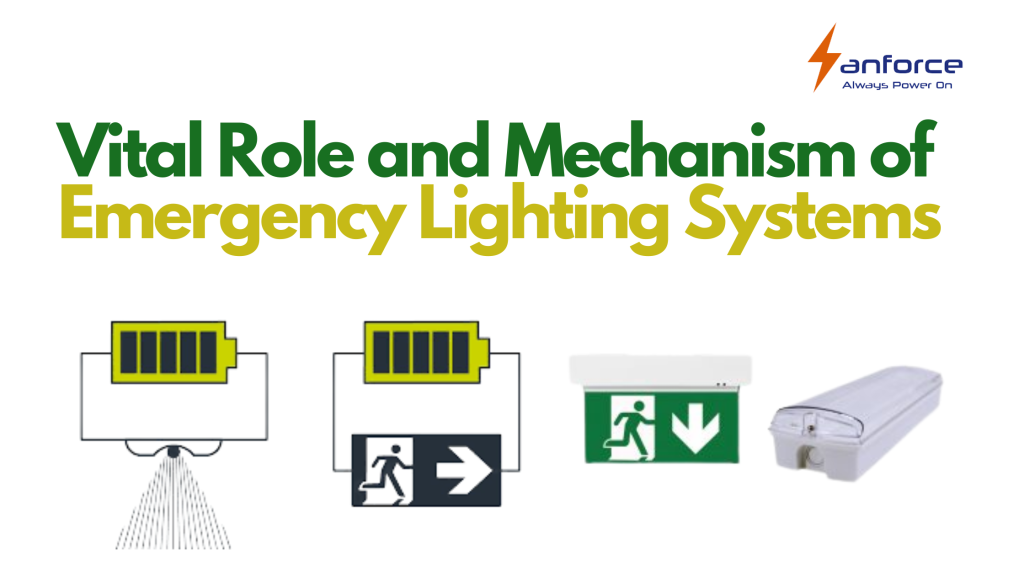In the realm of safety and preparedness, emergency lighting stands as a beacon of reliability, ensuring that even in the darkest of times, a guiding light paves the way to safety. From power outages to fire emergencies, the purpose of emergency lighting is to illuminate critical areas, allowing individuals to navigate and evacuate buildings swiftly and securely.

In this comprehensive exploration, we delve into the profound importance of emergency lighting and unravel the intricate workings that empower it to safeguard lives.
In an increasingly urbanized and intricate global landscape, safety concerns have escalated, particularly in complex environments where unfamiliarity with layouts and procedures poses a challenge. This scenario holds true for vast, high-risk spaces like airports, stadiums, and government buildings, as well as smaller locations with simpler structures.
Emergency lighting emerges as a vital lifeline within this intricate backdrop. Its significance lies in enabling safe, swift, and effective evacuations from spaces and structures, not only during power outages but also when daylight or primary lighting is available.
A well-designed emergency lighting system doesn’t just facilitate evacuation; it guides occupants within enclosed and open environments, directing them toward safety equipment and assembly points. Emergency lighting prevents panic by offering necessary illumination and directing individuals to safety, ultimately resulting in the preservation of lives.
Beyond instilling confidence, the importance of effective emergency lighting extends to legal mandates. Compliance is not only crucial for those accountable for public and commercial building safety, but it also carries substantial consequences – hefty fines and legal penalties.
This legal imperative is enforced by authorities and insurers alike, governed by comprehensive standards rooted in occupational safety and building regulations. The intricate web of legislations defines emergency lighting’s realm, encompassing products, applications, and installation.
Emergency lighting serves as a lifeline in situations where traditional lighting systems fail due to power disruptions, fire hazards, or other unforeseen calamities. Its primary objective is to prevent panic, confusion, and accidents that can occur when occupants are left in darkness during emergencies.
This crucial tool has a dual role: not only does it offer sufficient illumination to identify exit routes and escape paths, but it also assists emergency responders in their crucial tasks.
At its core, the operation of emergency lighting is ingeniously designed to ensure continued functionality even when the primary power source falters. These systems employ a combination of electrical engineering and innovative technology to guarantee uninterrupted illumination. Let’s delve into the intricate mechanisms that make emergency lighting systems work effectively.
Emergency lighting systems come in various forms, each tailored to specific needs and circumstances:
A. Escape Route Lighting: These lights are strategically positioned along exit routes, stairwells, and corridors. They offer a clearly defined path to safety, minimizing confusion during evacuation.
B. Open Area Lighting: These lights provide general illumination in large spaces such as open office areas or assembly halls. Their purpose is to prevent disorientation and ensure safe movement towards exit routes.
C. High-Risk Task Area Lighting: In locations where critical activities are performed during an emergency, such as medical facilities, these lights ensure essential tasks can continue without disruption.
To ensure the reliability of emergency lighting systems, regular maintenance is essential. Routine inspections, testing, and battery replacement schedules must be adhered to.
Compliance with regulations, codes, and standards set by organizations like the National Fire Protection Association (NFPA) is crucial to guarantee that emergency lighting systems are effective and meet the required safety standards.
Emergency lighting serves as a testament to human ingenuity and the unwavering commitment to safeguarding lives. Its purpose transcends the physical provision of light, encompassing the assurance of safety, the prevention of chaos, and the facilitation of rapid response during critical situations.
By seamlessly blending technology, innovation, and adherence to regulations, emergency lighting systems stand as beacons of hope, guiding us through darkness towards the promise of safety and security.
Not sure what you required for your lightining project ?
Get in touch with us for FREE consultation.